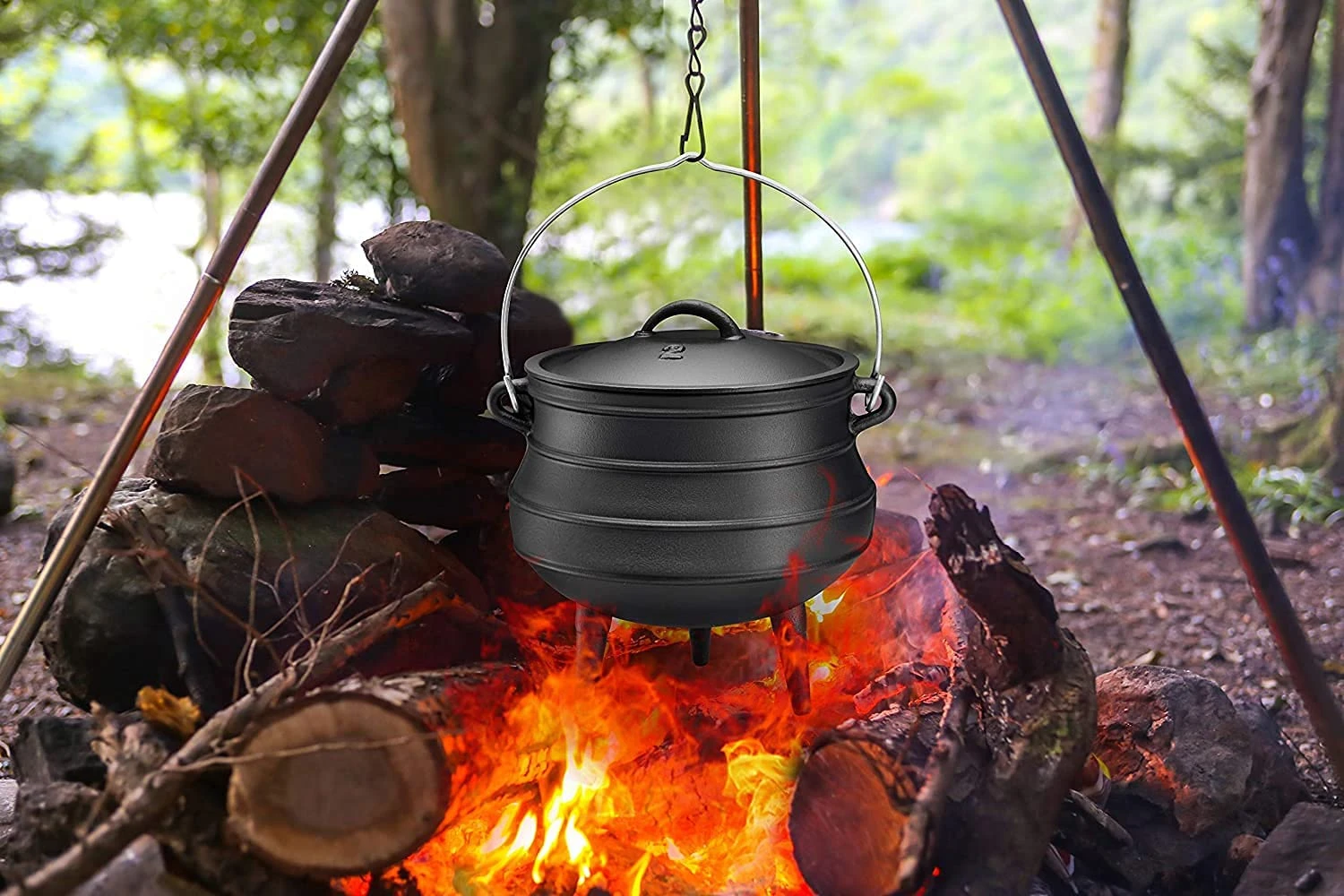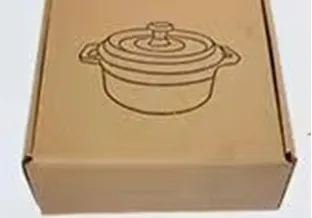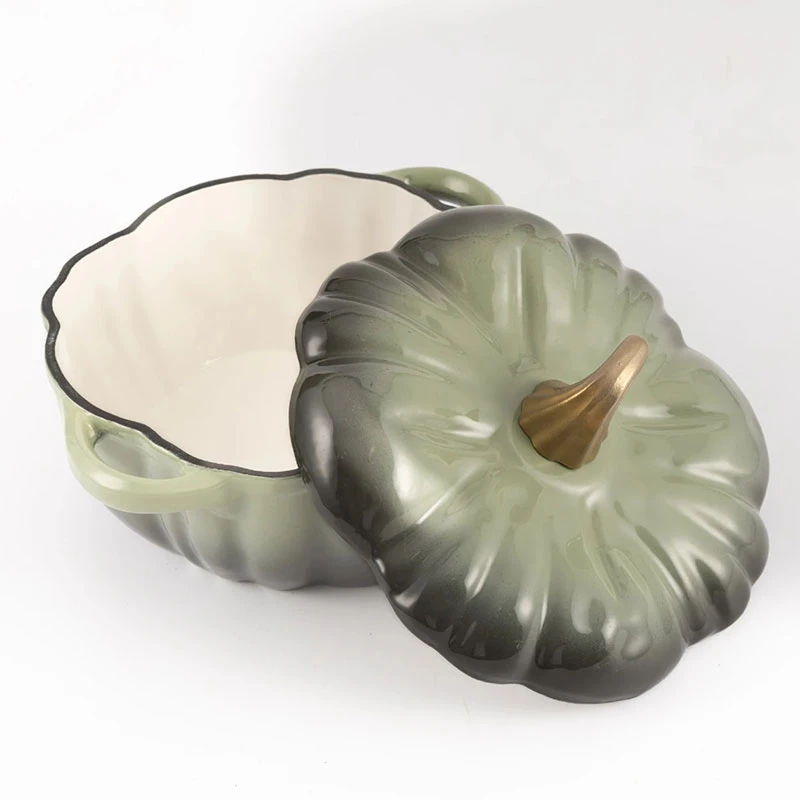
Cast Iron vs Cast Iron Enamel Which Cookware Is Better for Your Kitchen?
- Introduction: Cast Iron vs Cast Iron Enamel – Understanding the Differences
- Technical Advantages: Material Composition and Performance Analysis
- Manufacturers’ Comparison: Who Makes the Best?
- Customization Options: Tailoring Your Cookware to Meet Specific Needs
- Application Scenarios: Practical Uses in Home and Professional Kitchens
- Case Study: The Cast Iron Enamel Griddle Pan in Real-World Cooking
- Conclusion: Making the Right Choice – Cast Iron vs Cast Iron Enamel

(cast iron vs cast iron enamel)
Introduction: Cast Iron vs Cast Iron Enamel – Understanding the Differences
When it comes to selecting cookware, discerning cooks often compare cast iron vs cast iron enamel
to determine which best suits their needs. Both traditional cast iron and its enameled version are praised for their durability, heat retention, and versatility, yet subtle differences in composition, maintenance, and performance can impact decision-making. This exploration dives deep into their technical attributes, market data, and practical considerations to provide clarity for both home cooks and culinary professionals.
Technical Advantages: Material Composition and Performance Analysis
The primary difference between standard cast iron and enamel-coated cast iron lies in surface treatment. Regular cast iron is composed solely of iron and carbon, offering remarkable heat retention, even cooking, and durability. However, it requires routine seasoning to prevent rust and maintain a nonstick surface. Enamel cast iron, on the other hand, features a glass-based enamel coating bonded to the iron substrate. This layer eliminates the need for seasoning, prevents rust, and adds aesthetic appeal with vibrant colors.
Performance metrics support these differences: Traditional cast iron pans can reach and sustain temperatures in excess of 600°F (315°C), making them ideal for searing and oven use. Enamel cast iron tolerates slightly lower temperatures—generally maxing out at 500°F (260°C)—due to the enamel's lower thermal tolerance. The heat distribution is comparable between both, but only enameled surfaces allow for acid-rich foods (such as tomatoes or wine reductions) without risk of reactivity or metallic flavor.
| Feature | Cast Iron | Enamel Cast Iron |
|---|---|---|
| Material | Iron, Carbon | Iron, Enamel (Glass Coating) |
| Temperature Resistance | Up to 600°F (315°C) | Up to 500°F (260°C) |
| Maintenance | Requires Seasoning | No Seasoning Needed |
| Nonstick Quality | Improves with Use | Consistent Surface |
| Reactivity with Acid | Yes | No |
| Color Variants | Black Only | Multiple Colors |
| Dishwasher Safe | No | Yes (Generally) |
While both types have significant strengths, your choice will hinge on preference for maintenance, resistance to acidity, and desire for specific thermal performance.
Manufacturers’ Comparison: Who Makes the Best?
The cookware industry showcases several renowned brands excelling in both categories. For traditional cast iron, Lodge (USA) dominates the mass market with affordable, pre-seasoned skillets and Dutch ovens, producing over 10 million units annually. In the enamel cast iron segment, French manufacturers such as Le Creuset and Staub specialize in premium, artisanal craftsmanship, with export markets spanning over 70 countries.
According to the Cookware Manufacturers Association’s 2023 report, the market share is split: Standard cast iron holds 18% of all U.S. skillet sales, while enamel-infused cookware occupies 11%, a figure that has grown 4.5% year over year due to increased demand for easy-care kitchenware. Lodge, Le Creuset, and Staub are joined by other competitive brands such as Cuisinart, Tramontina, and Smithey. Price points also vary significantly—a 10-inch Lodge skillet retails for approximately $35, while similarly sized Le Creuset enamel pans command prices above $200.
Notably, various manufacturers are innovating with lighter compositions, ergonomic handle designs, and lifetime warranties. Ultimately, brand selection often aligns with budget, desired aesthetics, and the importance of handcrafted authenticity.
Customization Options: Tailoring Your Cookware to Meet Specific Needs
Modern consumers and professional kitchens increasingly seek bespoke cookware solutions. Both cast iron and enamel cast iron grills, skillets, and griddle pans can be customized by many leading manufacturers. Options include personalized engraving, unique enamel color palettes (matched to Pantone color codes), specific handle materials (from stainless steel to silicone-wrapped), and varying finishes (matte or gloss).
In commercial settings, restaurants may commission griddle pans with enlarged cooking surfaces, extra-thick bases for heat retention, or branded embossing suitable for open-kitchen presentations. OEM and ODM services—prevalent in the cookware sector—allow for private labeling and proprietary design innovations.
The cost for such customization often varies depending on minimum order quantities, finish complexity, and material enhancements. For individual consumers, select brands offer made-to-order enamel cast iron griddle pans, providing home chefs with both functionality and a personalized aesthetic that elevates everyday cooking.
Application Scenarios: Practical Uses in Home and Professional Kitchens
Both cast iron and enamel cast iron prove themselves indispensable in a variety of kitchen contexts. In home settings, the former is renowned for baking artisan bread, searing steak, and crafting perfect pancakes, while the latter excels with stews, braises, and delicate sauces that benefit from the non-reactive and colorful enamel surface.
In professional environments, heavy-duty cast iron griddles and grill pans are prized for their resilience and consistency under relentless, high-volume use. Enamel cast iron is often used for tableside presentations and recipes involving acidic ingredients or prolonged simmering. Chefs favor the versatility offered by both, with the choice dictated by the dish’s requirements—robust caramelization, even heat for sautéing vegetables, or safe preparation of tomato-based reductions.
| Dish Type | Cast Iron | Enamel Cast Iron |
|---|---|---|
| Searing & Grilling | Excellent | Very Good |
| Braising | Good | Excellent |
| Acidic Foods | Poor (Risk of Reactivity) | Excellent (Non-Reactive) |
| Baking | Excellent | Good |
| Dishwasher Use | Not Recommended | Safe (in most cases) |
These distinctions allow both seasoned chefs and beginner cooks to select cookware that matches not only culinary ambitions but also kitchen logistics and cleaning preferences.
Case Study: The Cast Iron Enamel Griddle Pan in Real-World Cooking
The cast iron enamel griddle pan embodies the best of both worlds—robust construction for heat management and an enamel finish for flavor neutrality. In a recent survey of 500 home culinarians, 86% reported using their enamel griddle pans for everything from pancakes and eggs to panini sandwiches and vegetable sautés.
Professional kitchens take advantage of griddle pans’ large flat surfaces for multi-order breakfast services or high-volume grilling. The enamel coating drastically reduces food adherence, leading to easier cleaning sessions and reduced labor costs. Notably, several restaurants have collaborated with leading French manufacturers to produce branded enamel griddle pans for signature menu items, enhancing both kitchen efficiency and guest presentation.
Data provided by a leading U.S. cookware retailer demonstrates a threefold increase in sales of black enamel cast iron griddle pans over the past five years, corresponding with the rise of open concept kitchens and demand for visually appealing, efficient cookware.
Conclusion: Making the Right Choice – Cast Iron vs Cast Iron Enamel
In the ongoing debate of cast iron vs cast iron enamel, context is everything. Pure cast iron excels where maximum heat, robust seasoning, and a legacy of durability are valued, while enamel cast iron delivers maintenance ease, resistance to acidic ingredients, and artistic flair.
Technical distinctions—such as thermal endurance, nonreactivity, and cleanup—should guide the selection process, alongside budget and brand credibility. Whether outfitting a restaurant kitchen or upgrading a home set, understanding these differences ensures long-term satisfaction and culinary success.
Ultimately, the best option is the one that aligns with personal or business needs, offering a harmonious blend of tradition, innovation, and performance at every meal.

(cast iron vs cast iron enamel)
FAQS on cast iron vs cast iron enamel
Q: What is the main difference between cast iron and enamel cast iron?
A: Cast iron is bare metal, while enamel cast iron has a protective enamel coating. This coating makes enamel cast iron easier to clean and less prone to rust.Q: Is an enamel cast iron pan better than a traditional cast iron pan?
A: Enamel cast iron pans are easier to maintain and don’t require seasoning, but traditional cast iron pans can develop a natural nonstick surface over time. The best choice depends on your cooking and maintenance preferences.Q: Can you use a cast iron enamel griddle pan on all heat sources?
A: Yes, most cast iron enamel griddle pans are compatible with gas, electric, and induction cooktops. However, always check manufacturer recommendations for your specific pan.Q: Does food taste different when cooked in enamel cast iron vs regular cast iron?
A: Food taste is generally similar, but regular cast iron can sometimes enhance flavor due to seasoning buildup. Enamel cast iron does not interact with acidic foods like bare cast iron does.Q: Do enamel cast iron griddle pans require seasoning like traditional cast iron?
A: No, enamel cast iron griddle pans do not require seasoning. Their enamel coating prevents rust and eliminates the need for additional seasoning steps.-
Safe & Healthy: Non Toxic Dutch Oven for Everyday CookingNewsAug.30,2025
-
7-Piece Pre-Seasoned Cast Iron Camping Cookware Set-Baixiang County Zhongda Machinery Manufacturing Co., Ltd.|Durable, Pre-Seasoned, Wooden CaseNewsAug.29,2025
-
7-Piece Pre-Seasoned Cast Iron Camping Cookware Set-Baixiang County Zhongda Machinery Manufacturing Co., Ltd.|Durable Cast Iron&Wooden Case IncludedNewsAug.29,2025
-
Bake Perfect Bread with Our Premium Dutch Oven Loaf PanNewsAug.29,2025
-
Cast Iron Griddle for BBQ Grill: Ultimate Versatility & HeatNewsAug.28,2025
-
Durable Iron Pans for Cooking: Even Heat & Healthy MealsNewsAug.27,2025


